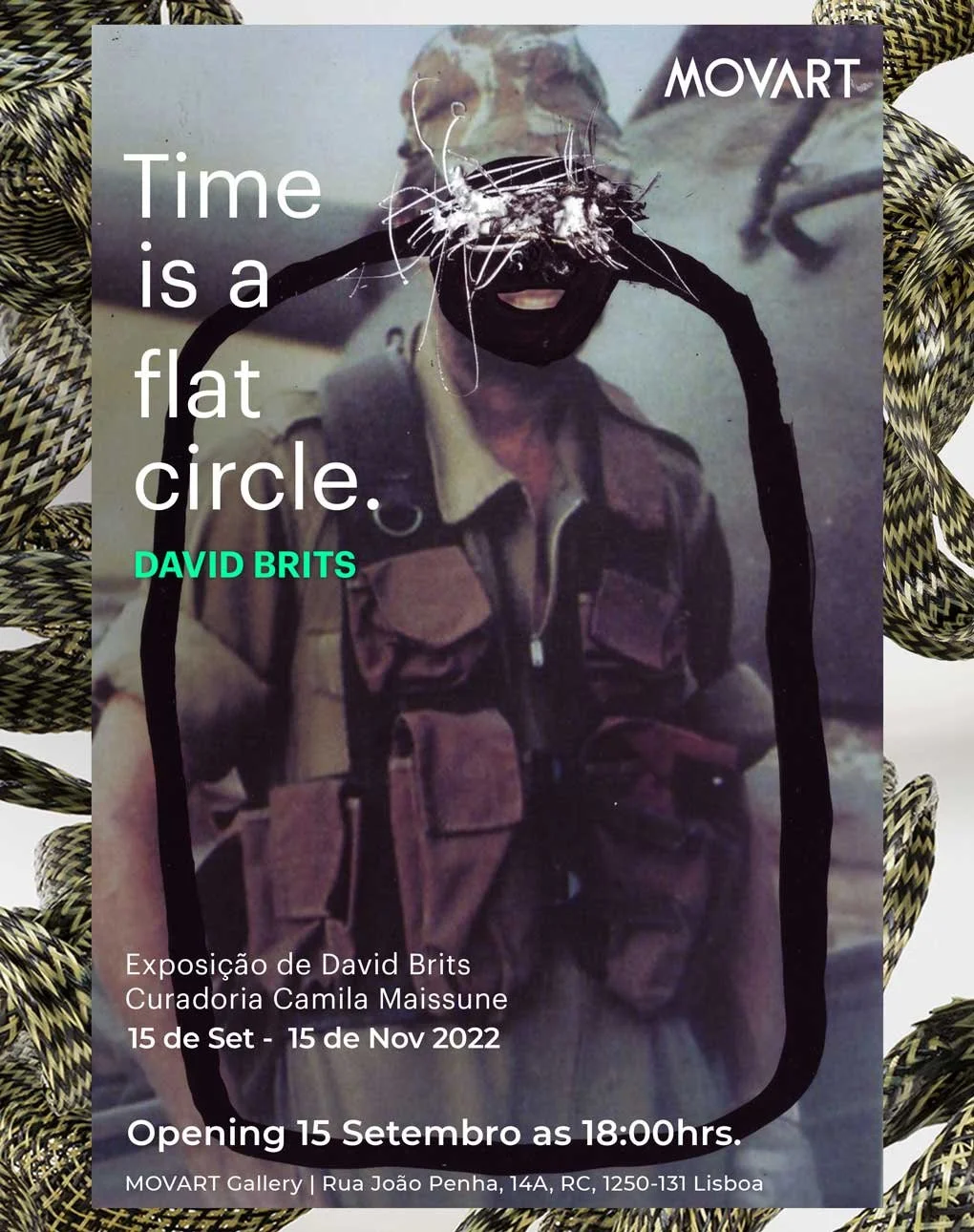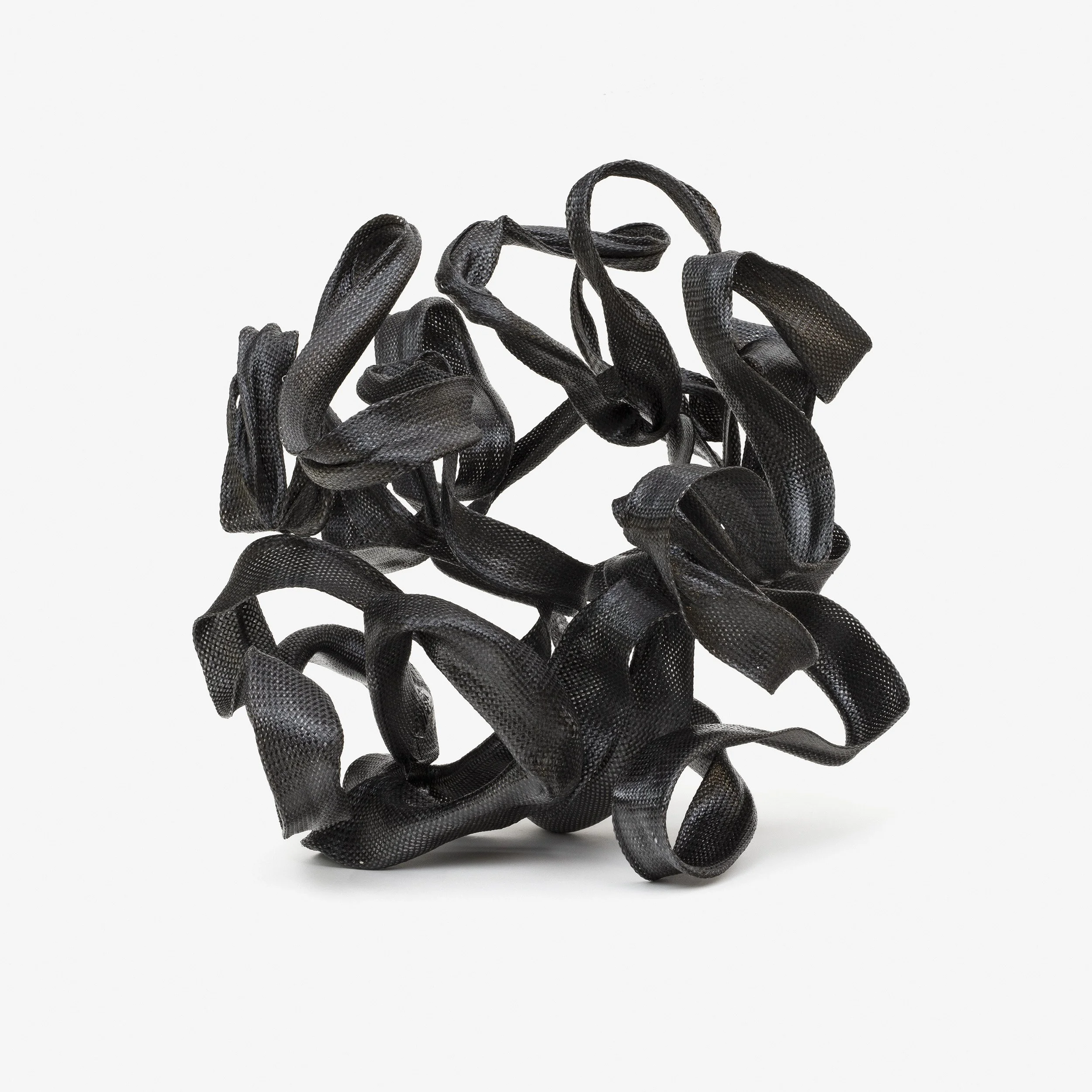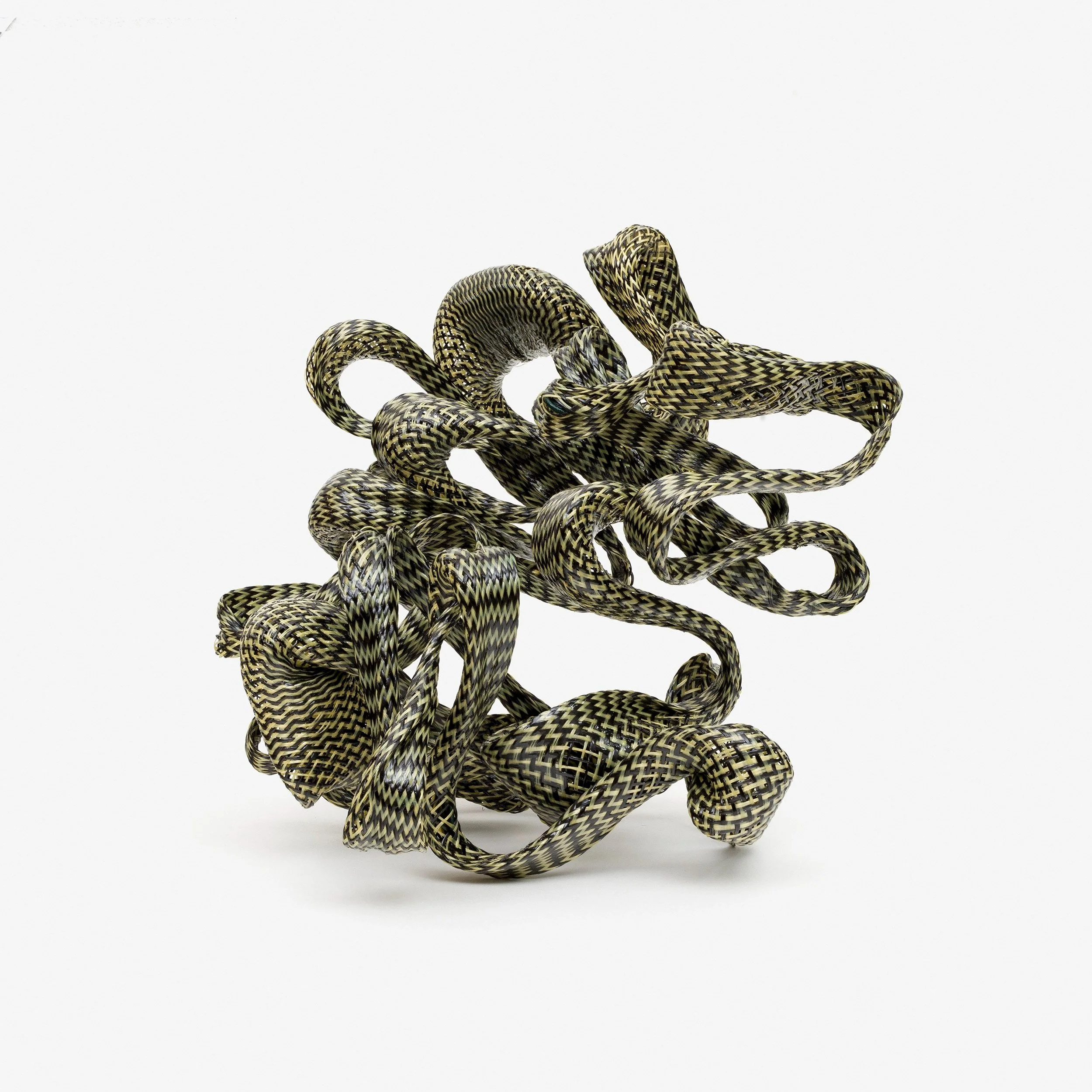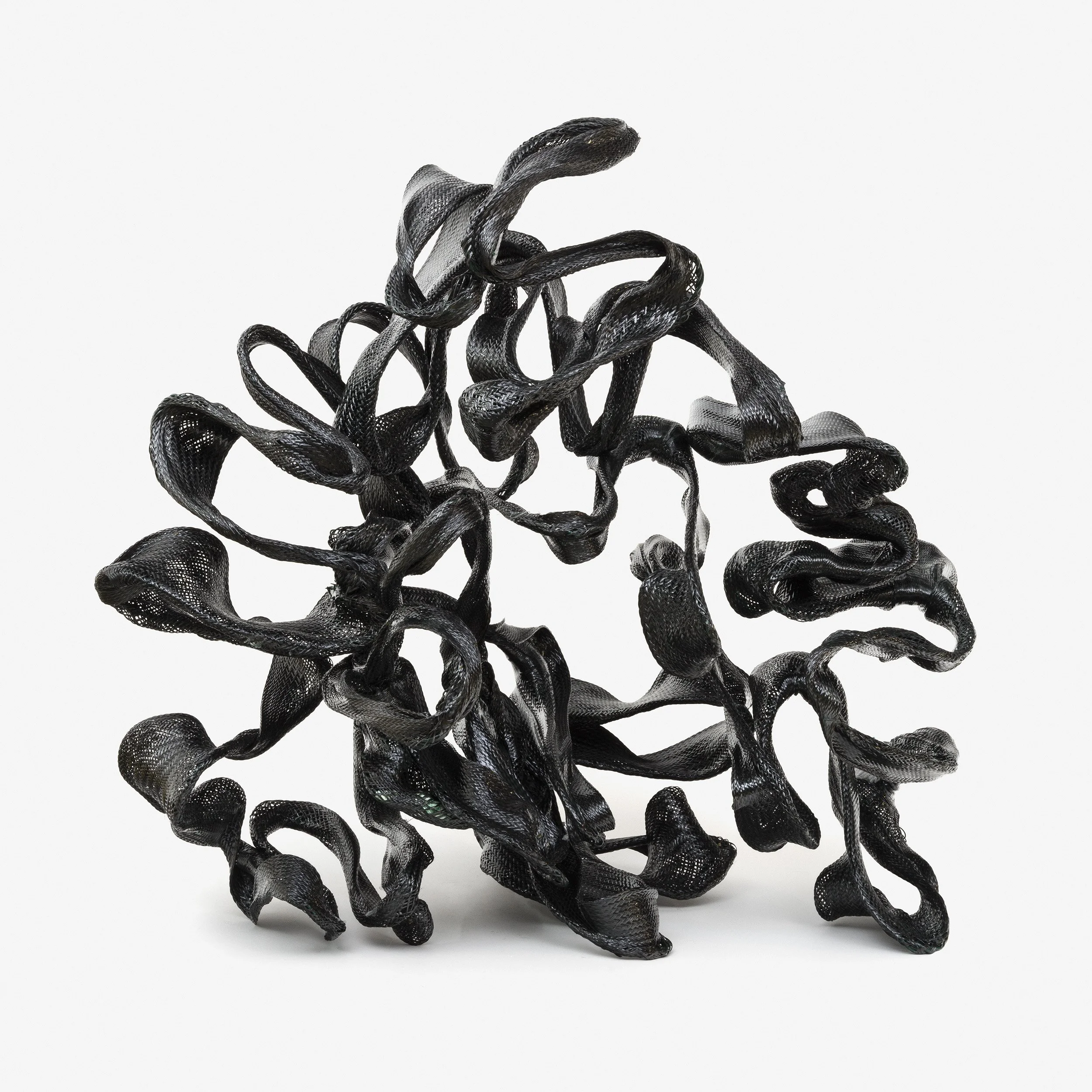‘Time is a Flat Circle’
MovArt Gallery, Lisbon—Curated by Camila Maissune, associate curator MAAT Museum
Time is a Flat Circle by South African artist David Brits (b. 1987) comprises a set of photographic works completed between 2010–2012 as well as a series of new carbon fibre sculptures. The exhibition commemorates the 35th anniversary of the Battle of Cuito Cuanavale, a large-scale mechanised tank battle that took place in southern Angola between Angolan, Cuban and South African forces during the years 1987–1988.
Based in an archive of pictures posted on social media groups by South African ex-conscripts, many of whom fought in South Africa’s so-called “Border War” in Namibia and southern Angola from the 1960ies to the 1980ies, David Brits uses mark-making, erasure and scratching, thus embodying the complexities of working through his own masculinity and inherited history in post-Apartheid South Africa.
Brits’ sculptural works take as their principal archetype the “Ouroboros”, a Greek-derived word describing the symbol of a snake devouring its own tail. The artist brings forth an image whose logic refutes itself, and which somehow suspends time.

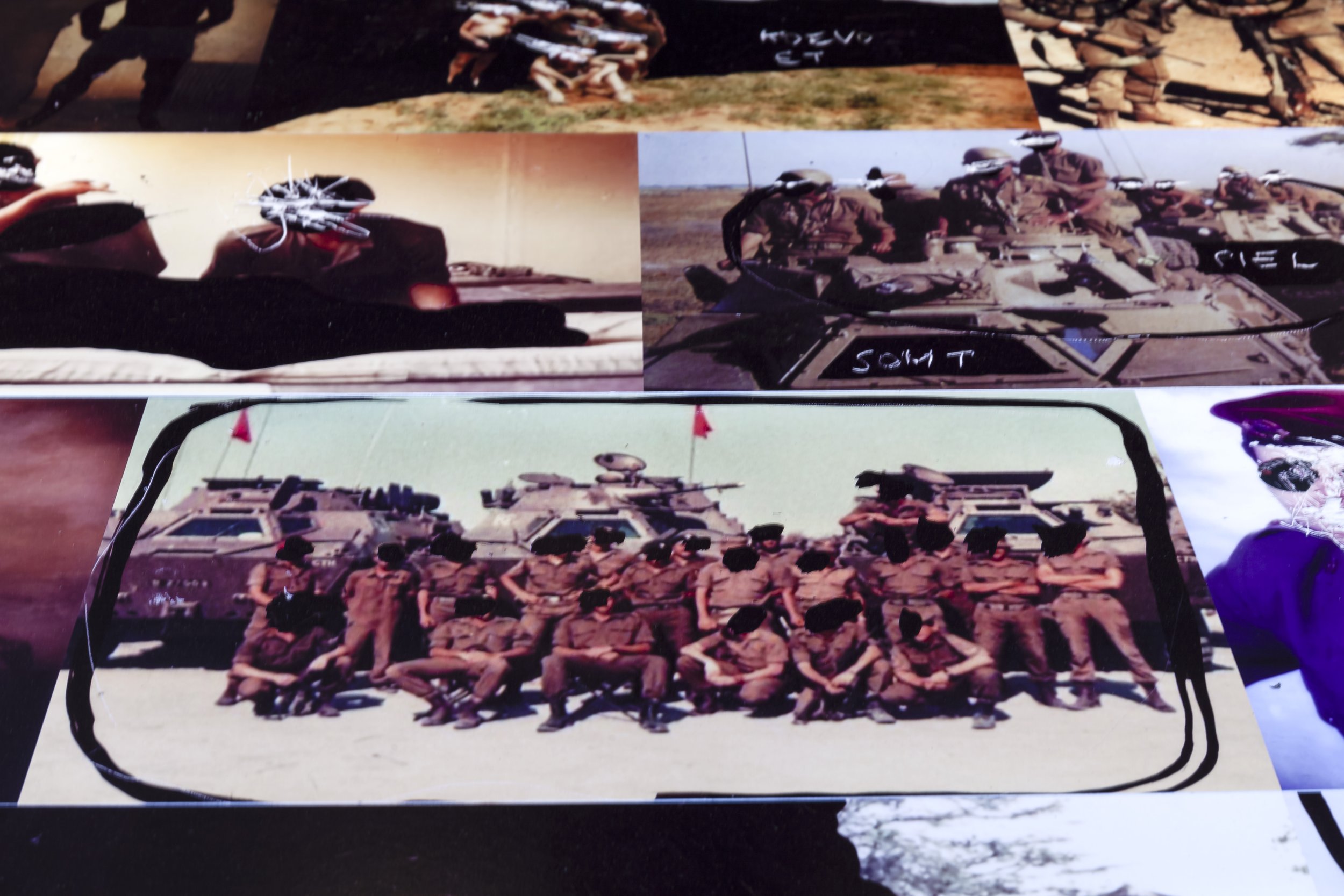
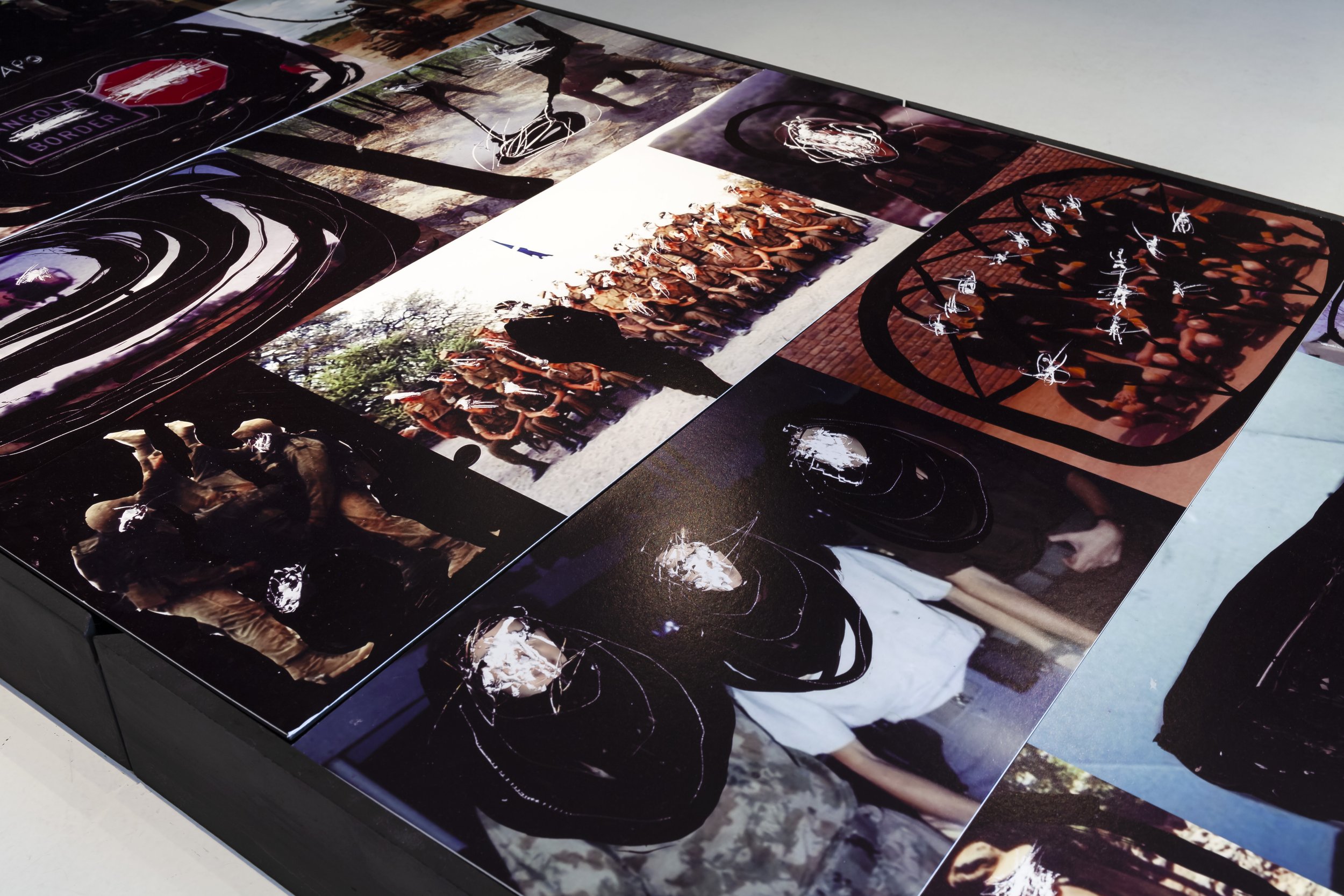


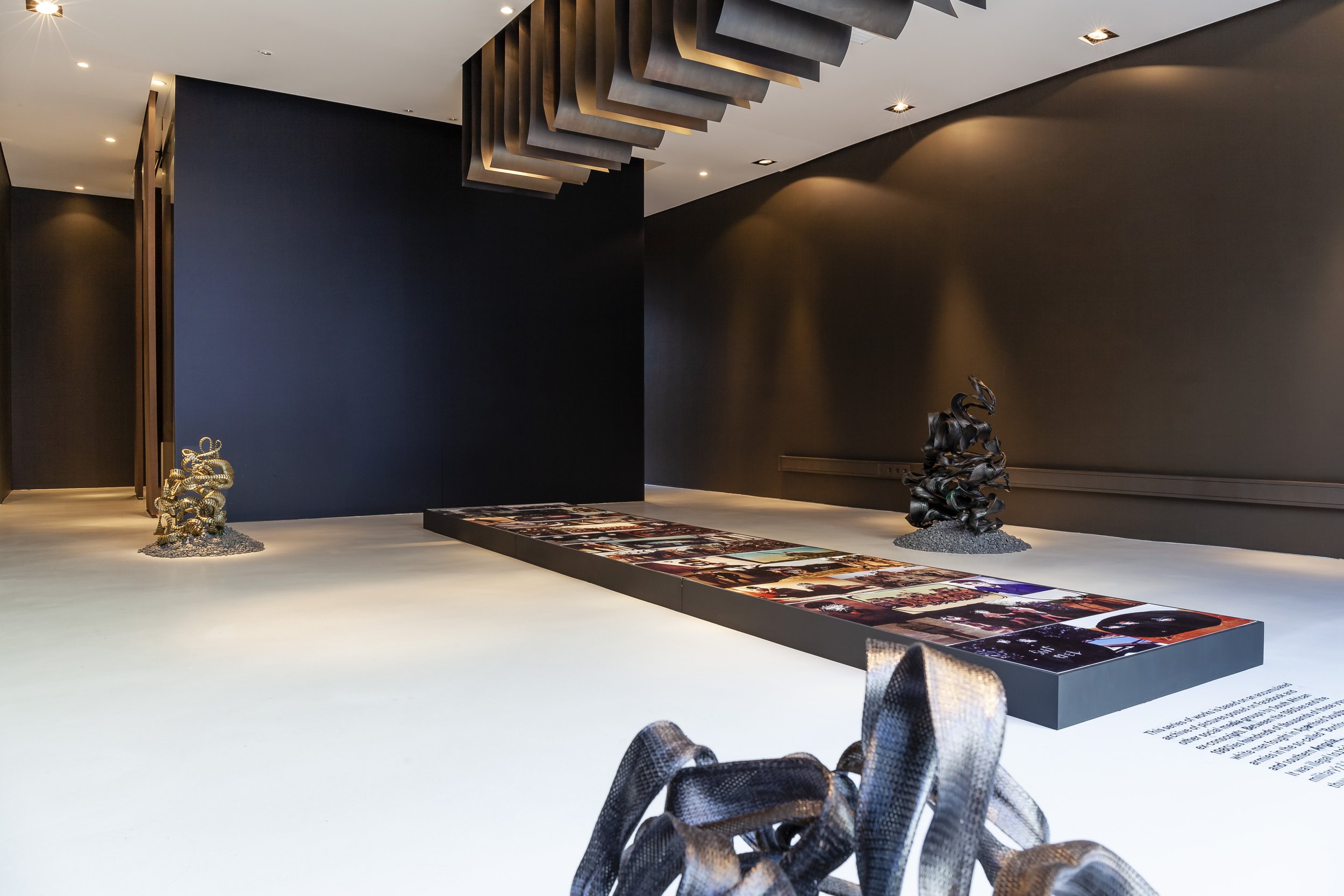


‘Ouroboros’
Exhibition Essay by Camila Maissune.
“I'll walk a while on this ground
The soil rich in simple life
In this constant state of decay
Until of this earth I am again
Borne of circle, head to tail.” (Oroboros, Unknown writer)
Some cultures considered snakes immortal because they seemed to be reincarnating from their own selves when they shed their skin. Snakes were also often associated with immortality because they would bite their tails to form a circle and, when they coiled, create spirals. Both circles and spirals were seen as symbols of eternity. In Egyptian myth, the state of existence before creation was symbolised as Amduat, a coiled serpent from which Ra, the Sun, and all creation emerged, returning every night and being reborn every morning.
In "Time is a Flat circle", one witnesses a political-poetic collage in different layers of the archive. Between image, video and sculpture, we witness a permanent camouflage in which history, man and animal are demultiplied in a narrative and a mapping of memories.
John Wood, a photographer and filmmaker specialising in reptiles and snake catchers, has for sixty years captured thousands of snakes, spiders, scorpions, lizards and frogs for medical research and the creation of snake and spider antivenoms. By appropriating his archives, those of his maternal grandfather, Brits presents a video essay, with a circular looped narrative, recreating a visual camouflage between the multiple frames of the archive.
Brits symbolically adopts the "ouroboros", a Greek word that describes the symbol of the snake consuming its own tail and connected it to an archive of images published on social media of groups of former South African recruits. Many of these ex-conscripts fought in what is known as the "Border War" in Namibia and Southern Angola from the 1960ies to the late 1980ies. The ouroboros presents itself once again in the black, circular strokes with which Brits erases the images, erasing the faces, in a sense vandalising them, thus incorporating the complexities of working with the inherited history of a post-apartheid South Africa. As Anfonso Dias Ramos states, Brits vandalises "the integrity of the original images, which were largely limited to scenes of male bonding and uneventful daily rituals, codifying the dominant way of talking about the war in terms of camaraderie and masculinity, ignoring the extreme violence surrounding it."
The sculptures, made of carbon fibre, crawl around the exhibition space just like the bodies of soldiers, which in the exhibition we gaze at from above, in a helicopter view, evoking the battle of Cuito Cuanavale, a large-scale mechanised tank battle that took place in southern Angola between Angolan, Cuban and South African forces between 1987 and 1998.
Snakes were regularly considered guardians of the underworld or messengers between the Upper and Lower worlds because they lived in cracks and holes in the ground. In "Time is a Flat Circle", David Brits generates an image whose logic is refuted and which somehow suspends the very circularity of time.
Stealing With My Eyes (2022) Carbon Fibre, Fibreglass, Aluminium, Resin. 43 x 43 x 42cm
Heirophant (2022) Fibreglass, Kevlar, Aluminium, Resin, Pigment 50 x 40 x 30cm
Drawing My Hand at Trying (2022) Fibre Glass, Aluminum, Resin, Pigment. 42 x 25 x 46cm
The History of Form (2022) Carbon Fibre, Aluminium, Resin. 76 x 45 x 70cm
I Swore I Thought I Saw (2022) Fibre Glass, Aluminum, Resin, Pigment. 42 x 25 x 46cm
Redrawing the Silhouette (2022) Carbon Fibre, Aluminium, Resin. 80 x 80 x 50cm
Selected Works:
Below:
Images from the South African Defence Force Facebook series (2010-2022) India Ink on Incised Facebook Photograph. Printed on Baryta Photorag, Size variable.





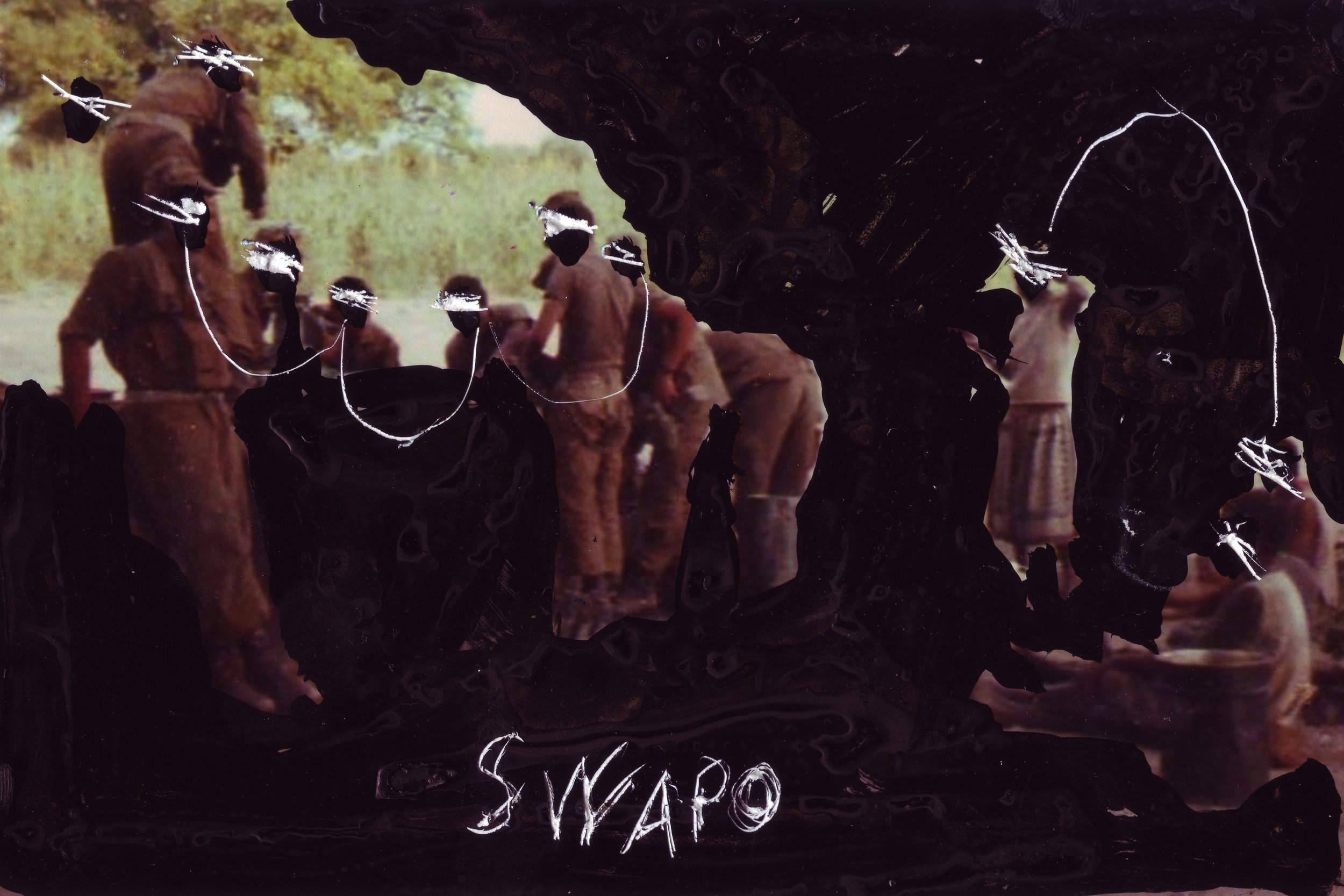








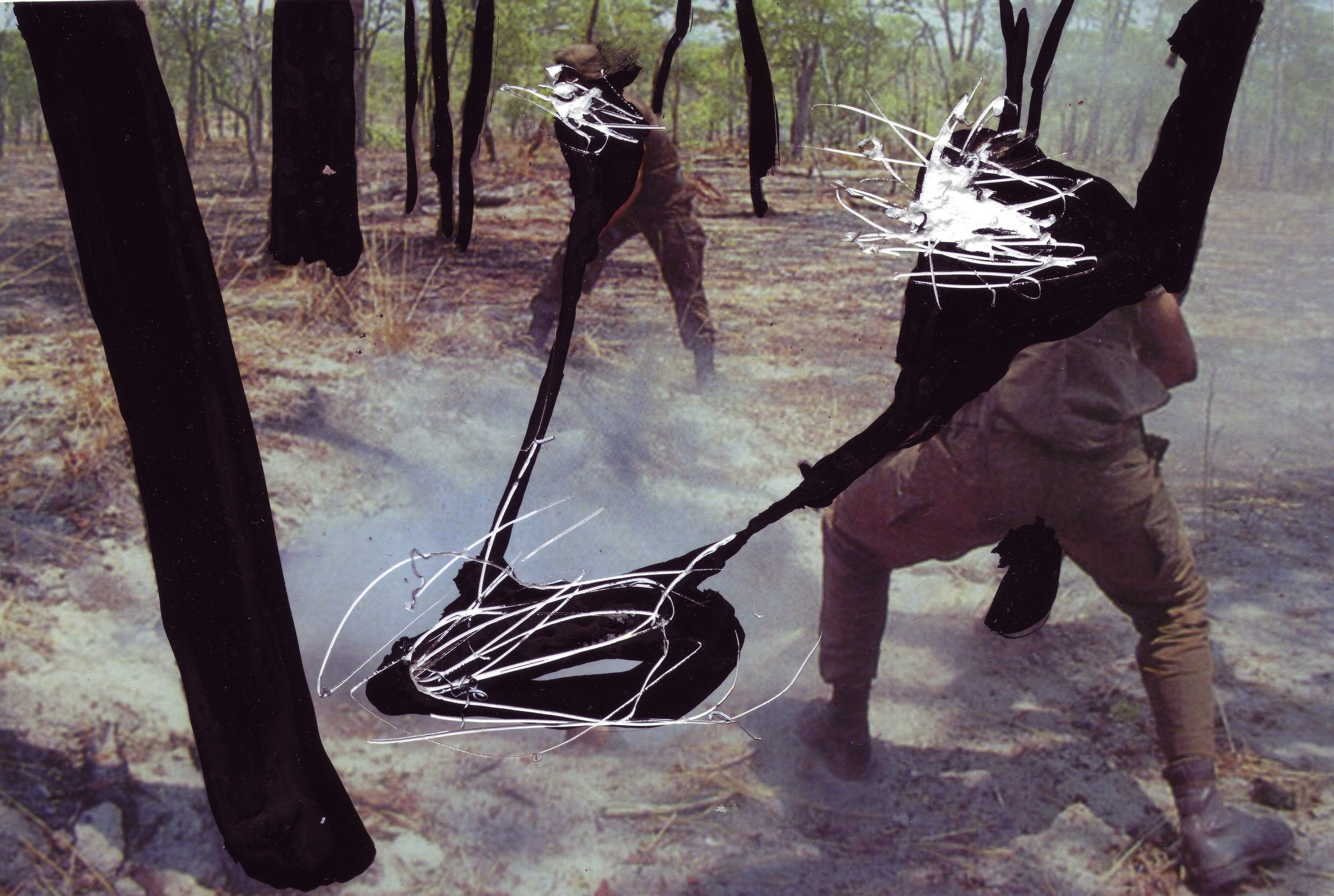


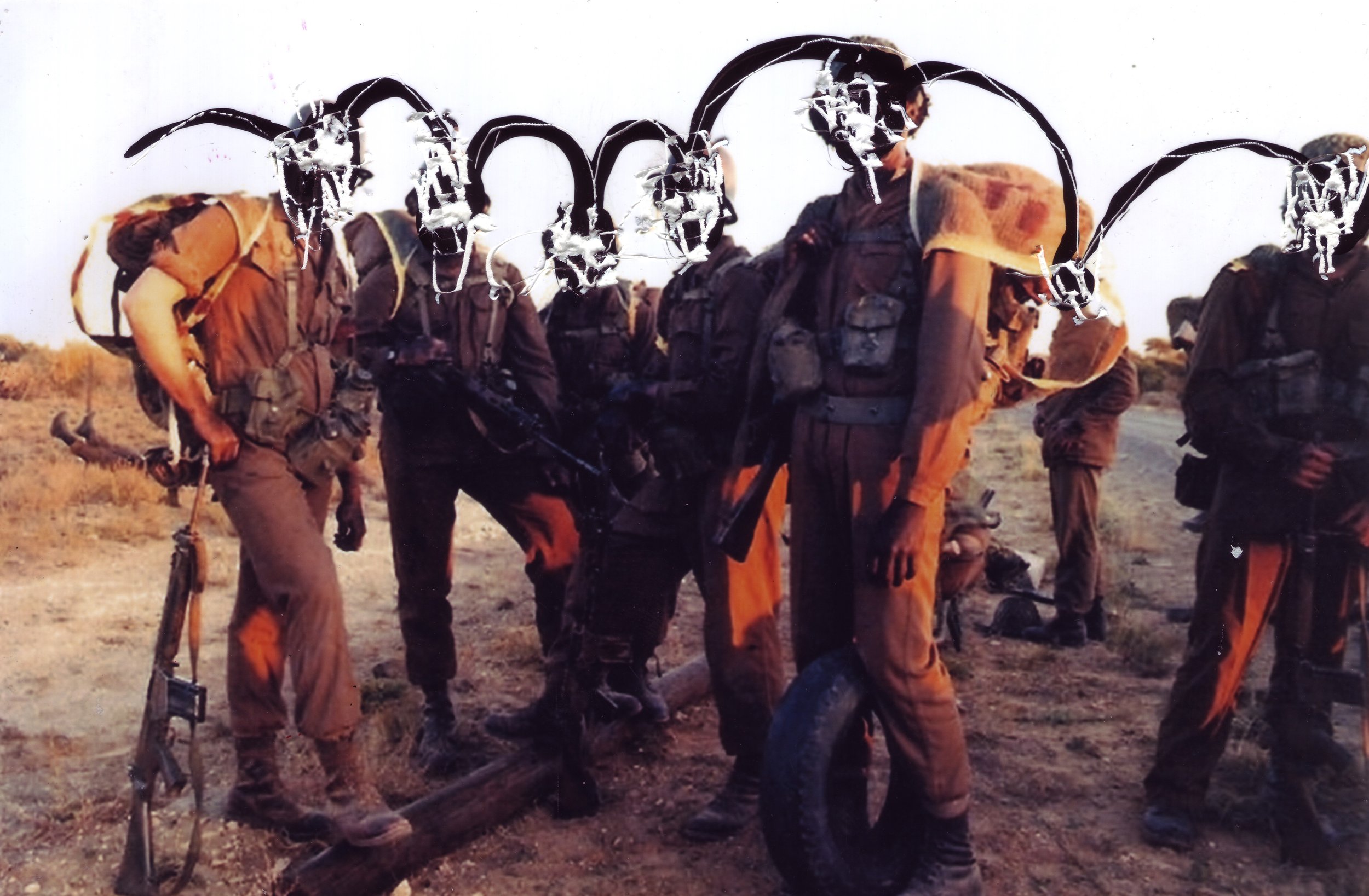








“Time is a Flat Cirlce”
2022. Runtime: 3'48''
A film accompanying Brits’ solo exhibition at MovArt Gallery, Lisbon. The film derives its footage from John Wood, the artists’ maternal grandfather.
Wood was one of South Africa’s most prominent reptile experts, snake catchers and snake showmen. Over a period of sixty years he caught thousands of snakes, spiders, scorpions, lizards and frogs for both medical research and the development of snake and spider antivenoms. Wood was a prolific poet, photographer and filmmaker, and shared his great passion for reptiles through these mediums as well as with his travelling snake show, which toured the country from the 1950ies to the 1970ies.
Footage: John Wood
Editor: Paulo Arraiano
Sound: Paulo Arraiano
